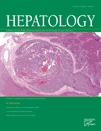Hepatitis E virus-specific T-cell response after transplantation†
Potential conflict of interest: Nothing to report.
We read with interest the article by Suneetha et al. 1 They suggest that hepatitis E virus (HEV)-specific T-cell proliferative responses are decreased in transplant patients, particularly in those with chronic hepatitis. 1 Some important points need to be addressed.
The investigators suggest that patients with detectable T-cell responses may not necessarily require antiviral treatment, but might be observed for spontaneous viral clearance. 1 However, they provided insufficient data to support this conclusion. In the transplant resolved-hepatitis group, apart from patient KTxR1, in whom T-cell response was studied during acute infection, very few patients had any T-cell response. Until further data are available, ribavirin therapy should be used in patients with chronic HEV infection who do not achieve viral clearance subsequent to immunosuppressive dose reduction. 2
The investigators suggest that a Th2-type response was only found in patients with chronic hepatitis. However, only 2 patients from the chronic group and 2 others from the resolving group had interleukin-10 secretion; hence, no conclusion can be drawn.
To understand T-cell responses in HEV infection, it is important to have appropriate controls. We wonder whether a control group of transplant patients with and without previous exposure to HEV should have been included. We note that the controls were significantly different to study patients in terms of age and sex, and previous exposure was defined using an insensitive assay.
Interestingly, Suneetha et al. reported that cluster of differentiation (CD)4+ and CD8+ T-cell responses against HEV peptides, which were undetectable when patients were viremic, became detectable soon after HEV clearance when treated with ribavirin therapy (n = 3) or when immunosuppressive therapy was decreased (n = 2). 1 Although decreasing immunosuppression may allow T-cell responses, the explanation for the increased T-cell response in patients who cleared HEV subsequent to ribavirin therapy is unclear. Important data are absent from the article, including duration of ribavirin therapy and the temporal relationship to T-cell testing as well as changes in immunosuppressive regime. If T-cell response was assessed in patients that were still receiving ribavirin, one can speculate that its beneficial effect on HEV infection could be related to its immunomodulation. Conversely, in cases where T-cell response was studied after ribavirin therapy and without modifying the immunosuppressive regimen, how do the investigators explain the increased T-cell response? These above-mentioned details are mandatory to understand the mechanism of action of ribavirin in treating HEV infection.
Finally, additional data would be of interest Were blood samples obtained systematically before intake of immunosuppressants? If not, this may dramatically influence the analysis of T-cell response. Is there a correlation between HEV viral load and T-cell response?
In conclusion, this study is a first step for the understanding of HEV infection in immunosuppressed patients. Additional studies are required.
References
Nassim Kamar M.D., Ph.D.* , Florence Legrand-Abravanel §, Harry R. Dalton¶, Jacques Izopet §, * Department of Nephrology, Dialysis, and Organ Transplantation, CHU Rangueil, Toulouse, France, INSERM U1043, IFR–BMT, CHU Purpan, Toulouse, France, Université Paul Sabatier, Toulouse, France, § Department of Virology, CHU Purpan, Toulouse, France, ¶ European Center for Environment and Human Health, Peninsula College of Medicine and Dentistry, Truro, UK.




